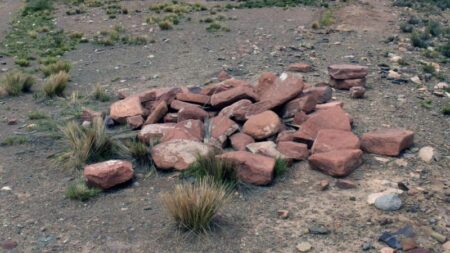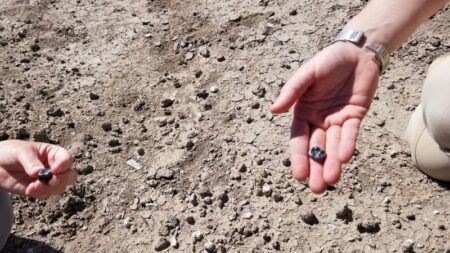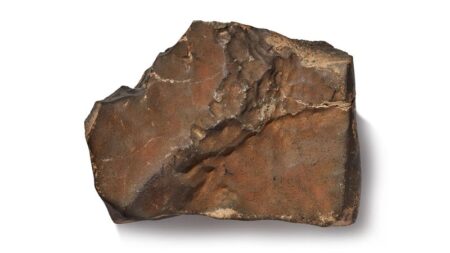Recent astronomical endeavors have offered an unprecedented view of an interstellar visitor speeding through our solar system. This is exemplified by the captivating images taken by the Hubble Space Telescope showcasing the comet officially designated as 3I/ATLAS. On July 21, when the comet was located approximately 277 million miles (or about 445 million kilometers) from Earth, these observations captured its journey from beyond our solar system.
The accompanying image reveals a striking teardrop-shaped dust cocoon trailing from the icy nucleus of the comet. The nucleus, a solid core composed of ice, dust, and rocks, is the origin of comets’ tails. As these celestial bodies move near stars, including our Sun, heat causes the sublimation of gases and the dispersion of dust, resulting in their characteristic tails. The observations made by the long-standing Hubble telescope represent only a part of the diverse array of tracking tools employed by scientists to monitor this intriguing comet, first detected on July 1.
At its astonishing speed of 130,000 miles per hour (or 209,000 kilometers per hour), 3I/ATLAS stands as the fastest object of non-solar origin recorded traversing through our solar system. As scientists collect additional data, particularly from Hubble, speculation regarding the comet’s size intensifies. Although the small nucleus, which is not directly visible, might measure anywhere between 1,000 feet (approximately 305 meters) and 3.5 miles (around 5.6 kilometers) in diameter, its exact dimensions remain uncertain, as detailed in a paper that has recently been accepted by The Astrophysical Journal Letters.
Beyond Hubble, many other space-based telescopes, including the renowned James Webb Space Telescope, and ground-based facilities like the W.M. Keck Observatory in Hawaii, are expected to yield further insights concerning the comet’s chemical makeup. Astronomers anticipate that the comet will stay observable from ground-based telescopes until September, before its proximity to the Sun makes it too dim to detect until it reemerges on the opposite side in early December.
However, significant uncertainties about 3I/ATLAS persist, particularly regarding its origin. David Jewitt, a leading astronomer in the field and a professor at UCLA, expressed concerns regarding the unpredictability of tracing its path back to where it originated: “It’s like glimpsing a rifle bullet for a thousandth of a second. You can’t project that back with any accuracy to figure out where it started on its path.” The nature of its speed correlates with its classification as an interstellar visitor, and while it resembles comets from our solar system, its speed indicates otherwise.
Scientists suggest that 3I/ATLAS has likely been traveling through interstellar space for billions of years. It has undergone gravitational influences from passing stars which have amplified its velocity over time, thereby increasing its momentum. The comet claims an exclusive position as the third known interstellar object observed within our solar system, joining the ranks of ‘Oumuamua in 2017 and 2I/Borisov in 2019.
Matthew Hopkins, a recent doctoral graduate from the University of Oxford, highlighted the exceptional velocity of 3I/ATLAS, noting its importance in modeling predictions about interstellar objects’ characteristics based on their velocities. Remarkably, the discovery of 3I/ATLAS coincided with the completion of his doctoral studies, marking a fortuitous timing for Hopkins, who plans to further his research at the University of Canterbury in New Zealand.
During his doctoral program, Hopkins, alongside his collaborators, developed the Ōtautahi–Oxford model, aimed at predicting the composition and properties of interstellar objects. Intriguingly, they estimate the likelihood of 3I/ATLAS being over 7.6 billion years old, contrasting with the relatively younger age of our solar system, which formed about 4.5 billion years ago. While the arrival of 3I/ATLAS into our solar system was coincidental, the ongoing influx of interstellar objects remains a probable reality, with estimates predicting that numerous smaller bodies traverse our solar system unseen.
To counter this observational shortfall, astronomers eagerly await the contributions from the Vera C. Rubin Observatory. Recent images have showcased its capabilities, and with its colossal 28-foot (8.4-meter) primary mirror, it promises enhanced detection of faint interstellar objects by scanning the entire sky every three nights. This capability is projected to allow the observatory to identify between five and 50 interstellar bodies within the next decade.
3I/ATLAS, therefore, stands as a significant indicator of an untapped population of interstellar objects, facilitating enhanced capabilities for future astronomical surveys and research. As the technology evolves and awareness of these interstellar travelers increases, astronomer David Jewitt anticipates that we stand on the brink of unveiling more such celestial visitors, marking a new chapter in our understanding of the universe











